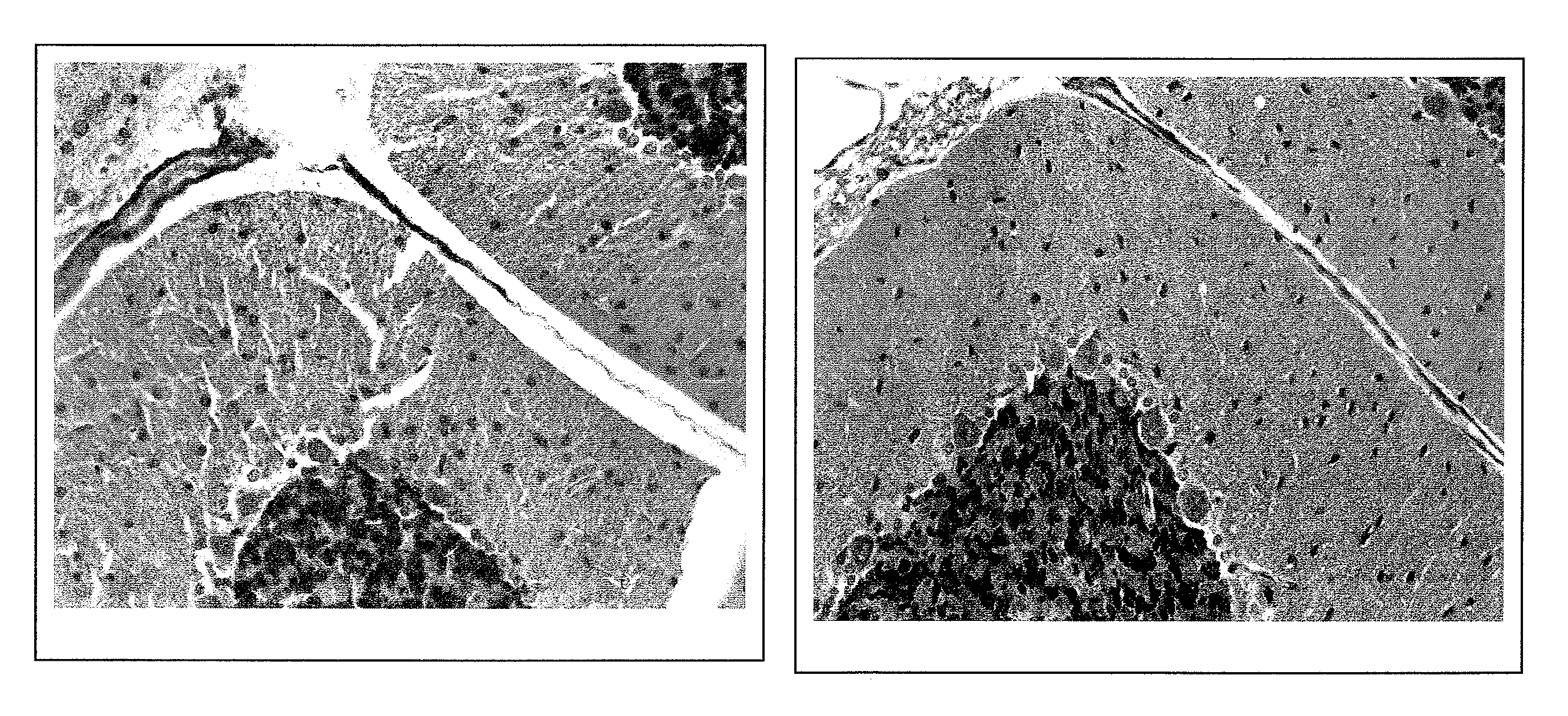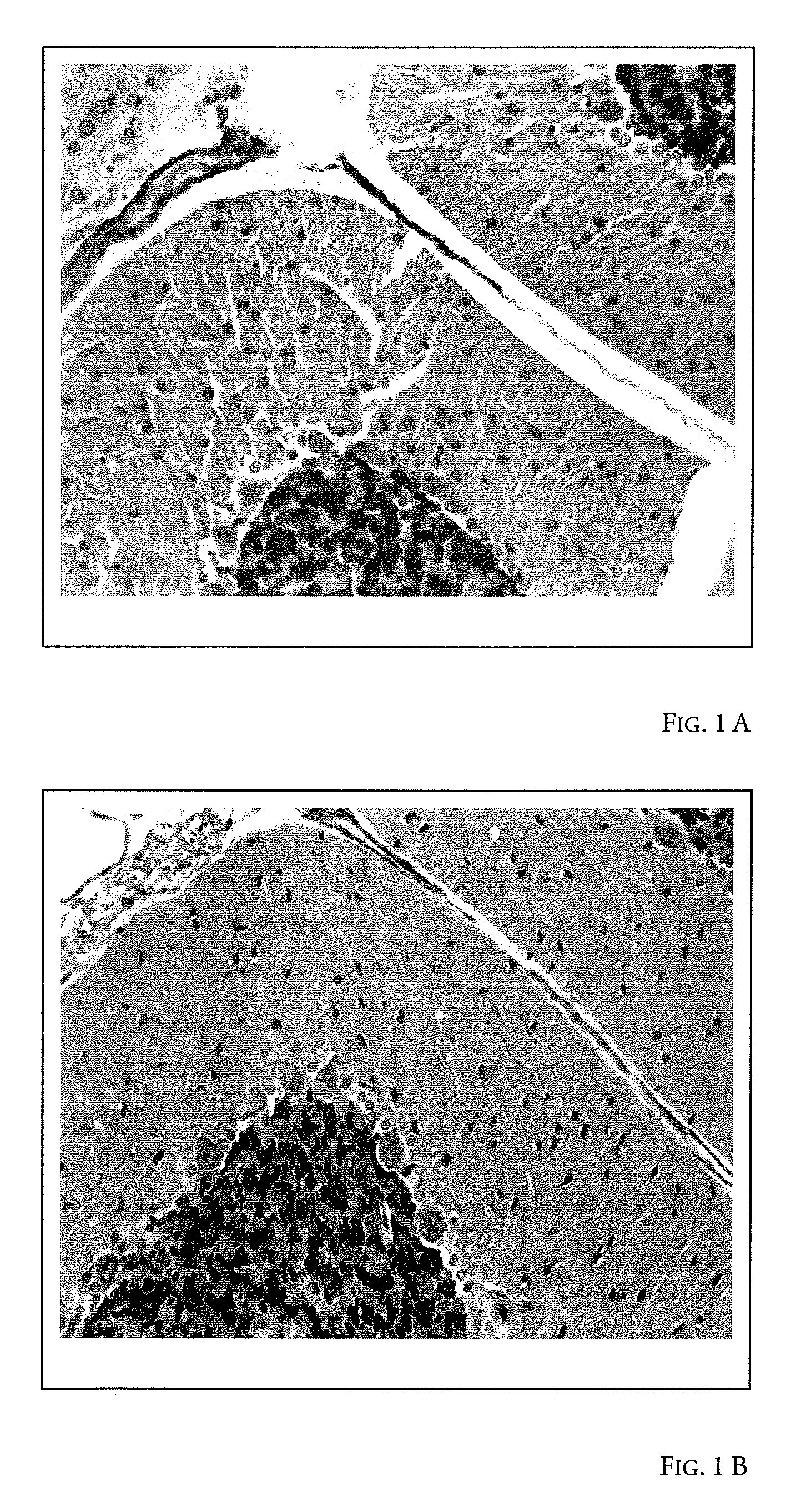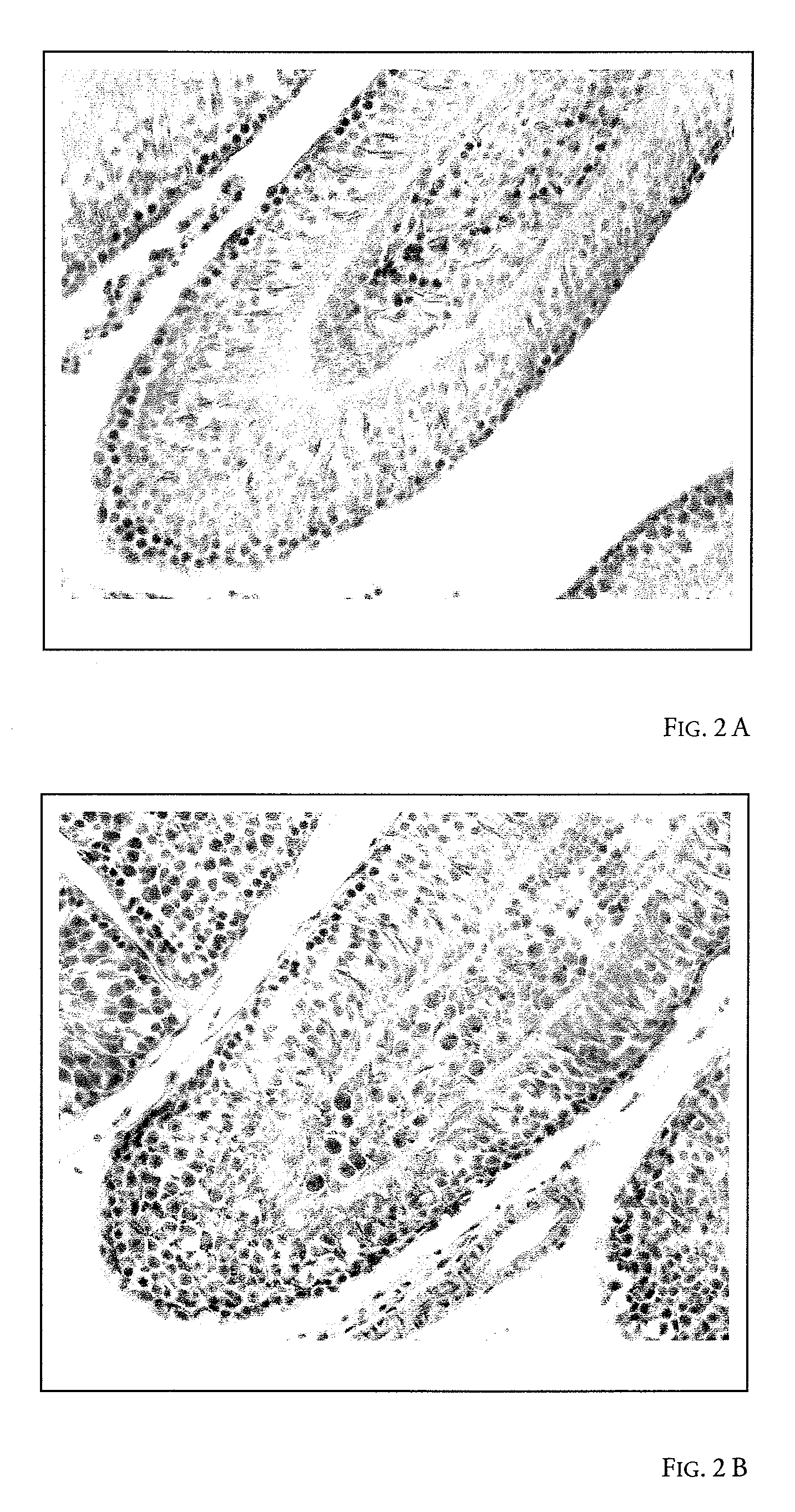Formalin-free fixation agent for histological stains of tissue samples
a tissue sample and fixation agent technology, applied in the field of histological examinations, can solve the problems of numerous staining techniques, tissue differentiation can in principle only be performed with a great deal of difficulty, and fixation agents are not suitable universally, so as to improve both the cuttability of the sample and the stainability of the sample. , the effect of improving the stainability
- Summary
- Abstract
- Description
- Claims
- Application Information
AI Technical Summary
Benefits of technology
Problems solved by technology
Method used
Image
Examples
example 1
Composition and Component of a Fixation Agent
[0073]
POS.PRODUCT%G / LUse Range1Urotropine440up to 20%2Citric acid5.4354.29up to 35%3TWEEN 801.43 × 10E−20.143up to 5%4Monopropylene glycol2.8628.57up to 20%5(2 E)-3-phenylprop-2-4.29 × 10E−20.429up to 5%enal6SPAN 800.71 × 10E−20.07up to 5%7H20 or suitable solvent.87.65876.5fillingto 100%8TOTAL1000
example 1.1
Calculation of the Molar Ratios of the Fixation Agent to Tissue Fixation
[0074]With a composition according to Example 1 with the components urotropine and citric acid, the molar ratio is calculated as follows:
[0075]Urotropine releases up to 6 mol formaldehyde from 1 mol urotropine. Citric acid releases up to 3 mol protons from 1 mol citric acid. 1 mol citric acid (anhydrous)=192.124 g / mol=>192.124 g; furthermore, 1 mol urotropine=140.19 g / mol=>140.19 g.
[0076]A solution that contains 4% urotropine and 5.5% citric acid (as proposed in Example 1) thus achieves a molar concentration of urotropine of 0.28 M and can form at most up to 1.71 M formaldehyde. Further, the molar concentration of citric acid is 0.28 M and can form at most up to 0.85 M protons.
[0077]This means that, in the solution from Example 1, 0.85 mol formaldehyde can be formed from HMTA and an excess of HMTA also remains in the solution. The molar ratio between total releasable aldehyde and total protons releasable from th...
example 2
Composition and Components of a Further Preferred Embodiment
[0082]
PRODUCT%G / LUse RangeHexamethylol melamine6600-20%Boric acid3300-35%Sodium hydroxide0.44 0-5%Dipropylene glycol2.8628.570-20%Phenylmethanal0.010.1 0-5%Polysorbate 200.010.1 0-5%H20 or suitable solvent87.65876.510-99% TOTAL1000
[0083]Hexamethylol melamine, referred to hereinafter as HMM, enters into the following balanced reaction:
[0084]
[0085]HMM
[0086]This reaction best takes place at pH 6-8, which is why a weak acid, specifically boric acid, is used in accordance with the present embodiment. The pH is adapted with sodium hydroxide. It may be that −>6 mol formaldehyde are released per mol HMM. This gives:
[0087]
1 mol HMM270g1 mol formaldehyde30g1 mol HMM contains 6 mol aldehyde or180gIn order to obtain a solution with total releasable formaldehyde content of 4% / l, 40 g releasable formaldehyde or 60 g HMM are consequently required.
[0088]Three protons are cleaved from the boric acid. Boric acid can be represented by the for...
PUM
| Property | Measurement | Unit |
|---|---|---|
| thick | aaaaa | aaaaa |
| thick | aaaaa | aaaaa |
| shrinkage | aaaaa | aaaaa |
Abstract
Description
Claims
Application Information
 Login to View More
Login to View More - R&D
- Intellectual Property
- Life Sciences
- Materials
- Tech Scout
- Unparalleled Data Quality
- Higher Quality Content
- 60% Fewer Hallucinations
Browse by: Latest US Patents, China's latest patents, Technical Efficacy Thesaurus, Application Domain, Technology Topic, Popular Technical Reports.
© 2025 PatSnap. All rights reserved.Legal|Privacy policy|Modern Slavery Act Transparency Statement|Sitemap|About US| Contact US: help@patsnap.com



